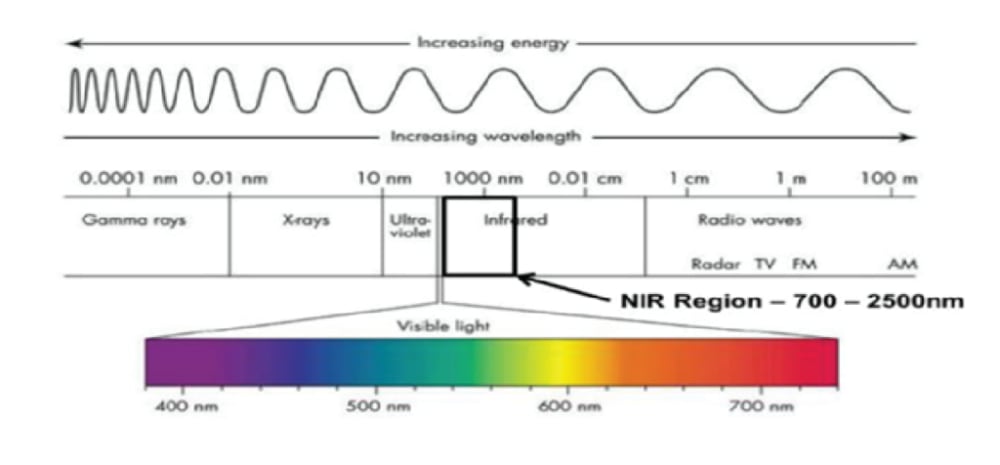The detectives learn how to develop an NIR calibration model

Chapter 7
? Case overview: After a heavily hands-on case of quickly and compliantly determining oil content in soybean samples, Shallot Holmes insists on having a workshop, rather than taking on a next case. Lieutenant Cornlumbo offers to lead his colleagues into the wonderful world of developing an NIR calibration model. The detectives are captivated, but will they be able to withstand the complexity of this topic? Read on and see for yourself.
After their two-day long marathon of solving an oil determination case , Shallot Holmes decides they need a detective break before taking on the next challenge. He asks his colleagues what they would like to do instead.
Miss Mapple shyly puts her hand up. She says that she’s been really impressed with the knowledge of Nancy Beef and Lieutenant Cornlumbo on NIR, a technique she is not so familiar with. She says she did not like taking the backseat in the chocolate case they solved with NIR , so she would really benefit from another workshop on the technique.
Since Nancy Beef led the last workshop, Lieutenant Cornlumbo offers to provide his colleagues with further training. He rushes off to prepare.
The next day the colleagues settle in and begin their workshop on how to develop an NIR calibration model. Lieutenant Cornlumbo begins by giving a refresher on how the NIR technique works. The NIR method measures absorption of NIR light by organic substances in relation to their chemical and physical properties. The NIR region ranges from 800 to 2500 nm.

NIR light interacts with bonds like C-H, O-H, N-H, which are present in organic materials, including food samples. The type and concentration of these bonds and the molecules they form govern how much NIR light is absorbed or reflected by a particular sample.

Chemometrics, or multivariate statistics, are used to calibrate a model that is capable of translating an NIR spectrum of a sample into meaningful information, such as protein, moisture or fat content. Lieutenant Cornlumbo makes a side note that one of the reasons he likes NIR is that you can use NIR calibration models on an NIR instrument to predict properties in new samples, avoiding long and expensive traditional analytical methods.
He then emphasizes that
a good NIR spectroscopy calibration model is essential for achieving quality results.
He proceeds to outline the two major steps in establishing an NIR calibration model.
1. Sample measurements
– Lab measurements for obtaining reference property values ( y)
– Spectral measurements (x)
2. Calibration
The aim here is to obtain a predictive model and quantify its accuracy
y = f (x) + ε
where f(x) is the function, or model, that translates spectral data into property values
where ε is the error of the predictions. The latter value is obtained by using model validation methods
Lieutenant Cornlumbo pauses to carefully explain that physical factors such as sample preparation, particle size, humidity and temperature can have an influence on NIR light absorption and on calibration performance of the NIR system .
It is crucial to perform consistent and methodical sample preparation and processing to guarantee the reproducibility of the analysis and to avoid any interferences on the spectra of the scanned samples.
The detective looks around the room. His colleagues look a bit overwhelmed, so he gives them a quick coffee break before he goes on the with the workshop. He wants to make sure he offers a few handful tips for the development process of an NIR calibration model.
After the detectives had seated themselves comfortably again, Lieutenant Cornlumbo resumes by giving his first tip.
Selection of calibration samples
One of the most important aspects for calibrating a good NIR calibration model, says Lieutenant Cornlumbo, is to use a representative selection of samples, or a calibration set, that encompasses the variability of the samples to be analyzed. Since different samples, such as meat samples compared to cereal samples, have different characteristics, NIR models must be calibrated for each type of material.
How many samples you should take into your calibration set depends on the variability and the distribution of the samples. Lieutenant Cornlumbo recommends to:
start with at least 50 to 100 samples in order to have a solid basis for obtaining an NIR calibration model with acceptable accuracy.
He states that there are many possible approaches for choosing calibration samples, but he suggests making the selection based on the spectral characteristics of the samples using calibration software with different algorithms to help make the selection.
The detective moves onto his second tip.
Reference values
Once you select a set of representative calibration samples, you must submit them to the laboratory to be analyzed by conventional analytical techniques to obtain “reference values” of the properties of interest. Lieutenant Cornrlumbo suggests using the same reference technique for all samples, for example the Kjeldahl method for determination of protein content or Soxhlet extraction for determination of fat content, to determine a parameter to avoid introducing a bias in the reference values.
Miss Mapple puts her hand up and says that the effects of the coffee break have worn off and she cannot follow anymore. The rest of the detectives agree that they are somewhat overwhelmed with all the information. Lieutenant Cornlumbo tells his colleagues that this is a perfect point to pause the workshop, as all his tips so far have been for processes done in the lab and his next tips would be on evaluation with software. And they better have fresh heads for this.
But he still suggests that his colleagues watch a few webinars to see practical applications of the NIR method for food analytics, including for measurement of parameters in beverage powders and in palm oil . Or to check out some additional online sources for sample-specific calibrations, such as NIR application finders .
Shallot Holmes worries that the workshop has tired his team, but he is relieved to hear them chatting happily and discussing aspects of developing an NIR calibration model as they head out the door. Spontaneously, he offers that they go watch a movie. The sleuths readily agree and head off to watch a murder mystery, with mouthfuls of pop and handfuls of popcorn. Even Lieutenant Cornlumbo, who can appreciate a good use of corn kernels.
To be continued…